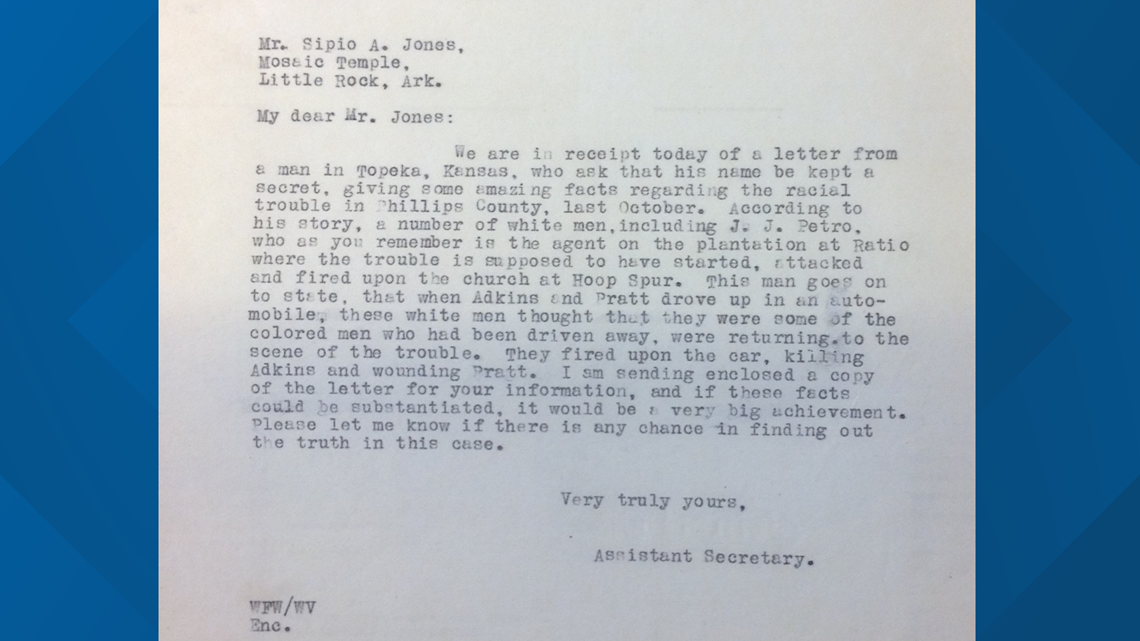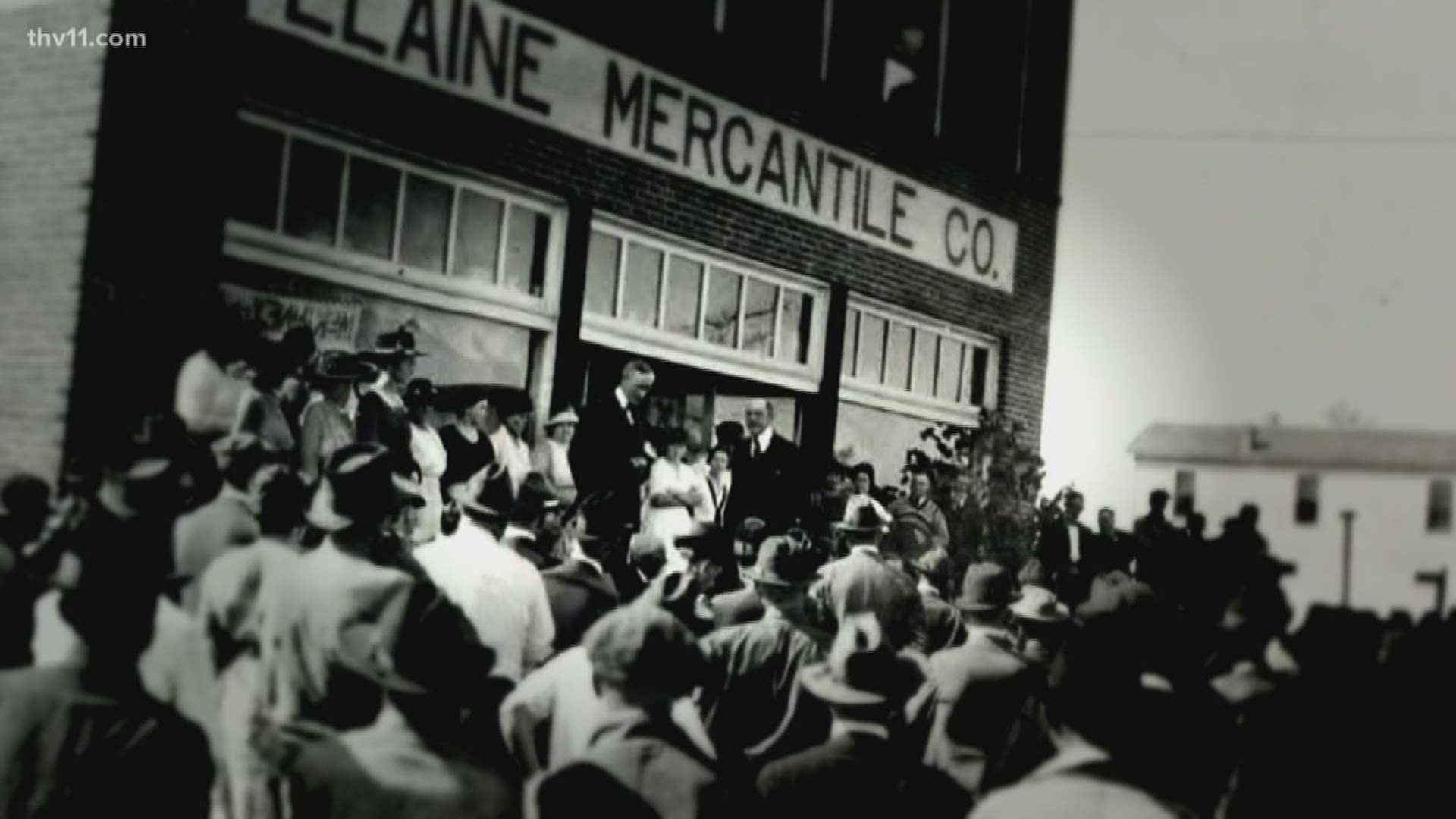ELAINE, Ark. — In the fall of 2019, Arkansas remembered the 100-year anniversary of what historians call the largest mass terror lynchings in American history. It took place in the Delta farmlands of Phillips County, Arkansas.
For every one of those years, the facts surrounding the racial riot were seemingly nonexistent— lost or buried to protect the narrative of post-World War I America as positive and light.
However, from September 30 until October 7 in 1919, was anything but. Estimates from historians say that anywhere between 100 and 300 African-Americans were killed in what is now known at the Elaine Massacre.
Historians say black veterans returning from the Great War considered themselves American citizens more than before after fighting for their country overseas.
When they returned to the Delta region of Arkansas, they saw farming opportunities as the key to the American Dream.
Instead, many— possibly in the thousands, their records lost to lack of documentation— lost their lives on the land they once held so much hope.
Assistant Professor of History at the University of Arkansas Little Rock Brian Mitchell and his team recently uncovered 20th-century records that piece together what happened the night the slayings began.
A group of African American sharecroppers in Phillips County hired a white Little Rock attorney named Ulysses Bratton in an attempt to avoid the violence of an uprising after alleged mistreatment by white landowners they worked for.
When the employers got wind of this, Dr. Mitchell said violence erupted, leading to the Elaine Massacre.
"We were able to piece together what happened that night immediately following the shootings," Mitchell said
For decades, the black workers were blamed and accused of planning riots.
But a ledger found in the attic of the Helena Museum of Phillips County tells another story.
"We discovered that the posse was comprised largely of the men that made up the American Legion Hall for Phillips County and they attest to this and give a testimony of how they were recruited in this ledger,” Mitchell explained.
RELATED: 100 years ago, the largest mass terror lynching in US history took place in a small Arkansas town
Mitchell said the ledger and other recently found documents suggest that the white employers sparked the violence, fearing lawsuits from their black workers.
In 1920, an anonymous letter was sent to the Little Rock Mosaic Temple supporting the ledger's record. A witness said that the shooting at Hoop Spur, a borough within Phillips County, didn't take place as it was being presented.
"[The author] maintains that the police officers that were there were not there accidentally," Mitchell said. "And that the plantation owners where the sharecroppers were planning to sue, had all sent out men to surround the church and that they were going to intimidate and shooting into the church."
"It changes the narrative completely."


Mitchell said this minute book, which chronicles the first 20 years of the Legion's existence, uncovered mysteries and answered questions historians have been asking for decades about what happened at the Hoop Spur church in 1919.
Sometimes the truth can be a hard truth to swallow, but Mitchell said it's important to embrace it all.
"I still feel that there's more to the story," he said.
We may truly never known the entirety of what led to the massacre more than 100 deaths over 100 years ago.
Mitchell plans to continue searching for more documents to find facts that could change how the Elaine Massacre was written into history.
The UA Little Rock Center for Arkansas History and Culture has a digital exhibit on the Elaine Massacre you can find by clicking here.

